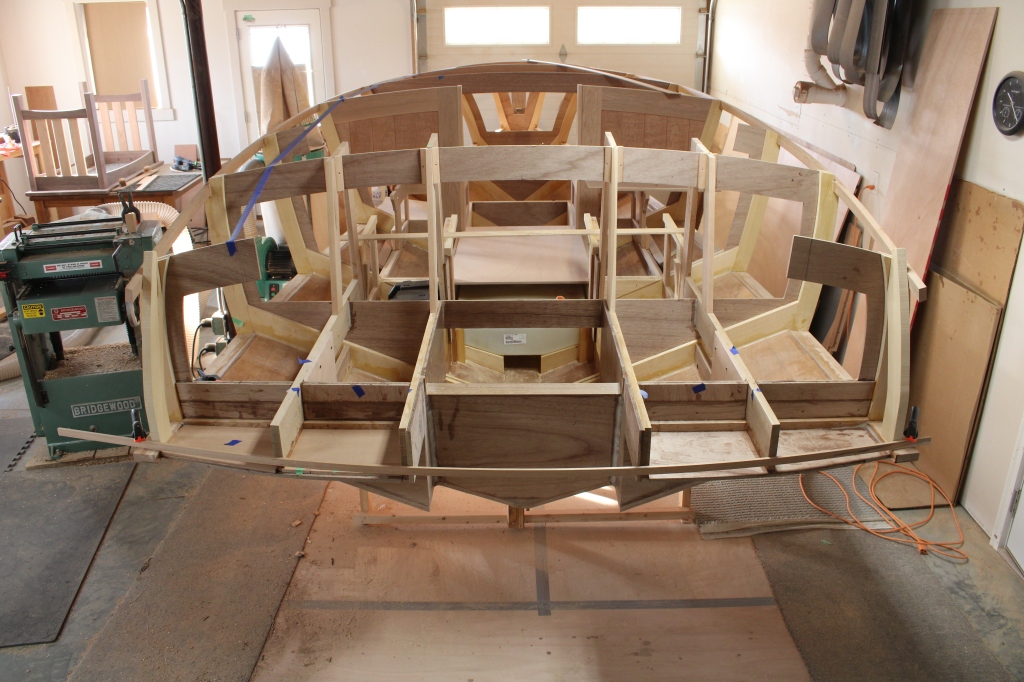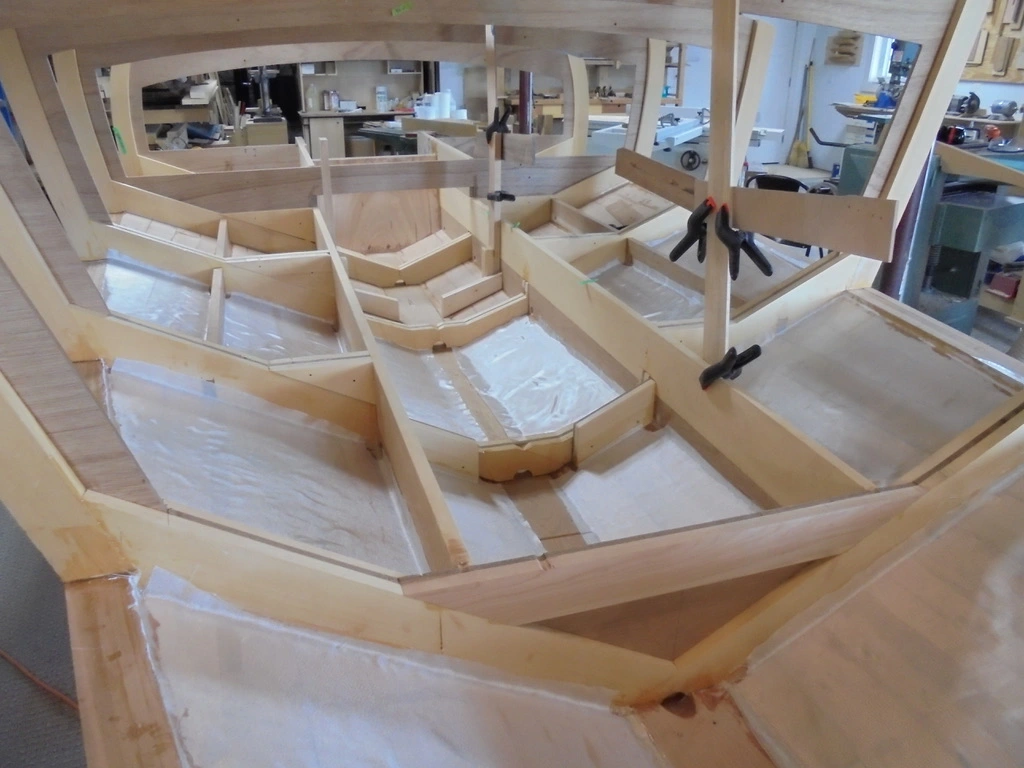From the beginning of building a boat, a grand attempt is made to follow plans, if you have some which I do not, and keep both sides symmetrical. That applies especially to the level, straight and and flat parts.
But the most visible and beautiful lines on a boat are at the edges, on the side, and the transom end. Those are mostly curves that are not so easy to measure, so the eye makes the final judgement on whether a line looks fair and pleasing.
This time it was figuring out the outer, lower curve of the transom. As usual, it starts with a pencil on paper. Then, I often use a thin bendable stick, shown at the bottom, to visualize the full size 3D shape.. Below, the bottom pieces complete the line, and compliment the top deck edge molding (sheer line), in smooth symmetrical curves.

Here is the side view of the full size cardboard and 1/4″ plywood patterns in preparation for the curved back corner lines.

Admittedly, the wooden boat building world is small, but when I hear of another builder, I like to meet and discuss construction ideas with them. So, it was my pleasure recently to be introduced to Charles Onyon, who has an interesting resume’ including working four years at Van Dam Custom Boats. A few years ago, I visited and took a tour of their inspiring shop, likely the premier boat building company in the country.
Charles came over to visit, and gave a far more educated scrutiny of the boat than the average house guest. He knows boat building including wood types, joinery, paint selection, and engineering for strength and esthetics. He is smiling because most people don’t know he is a celebrity . . .





